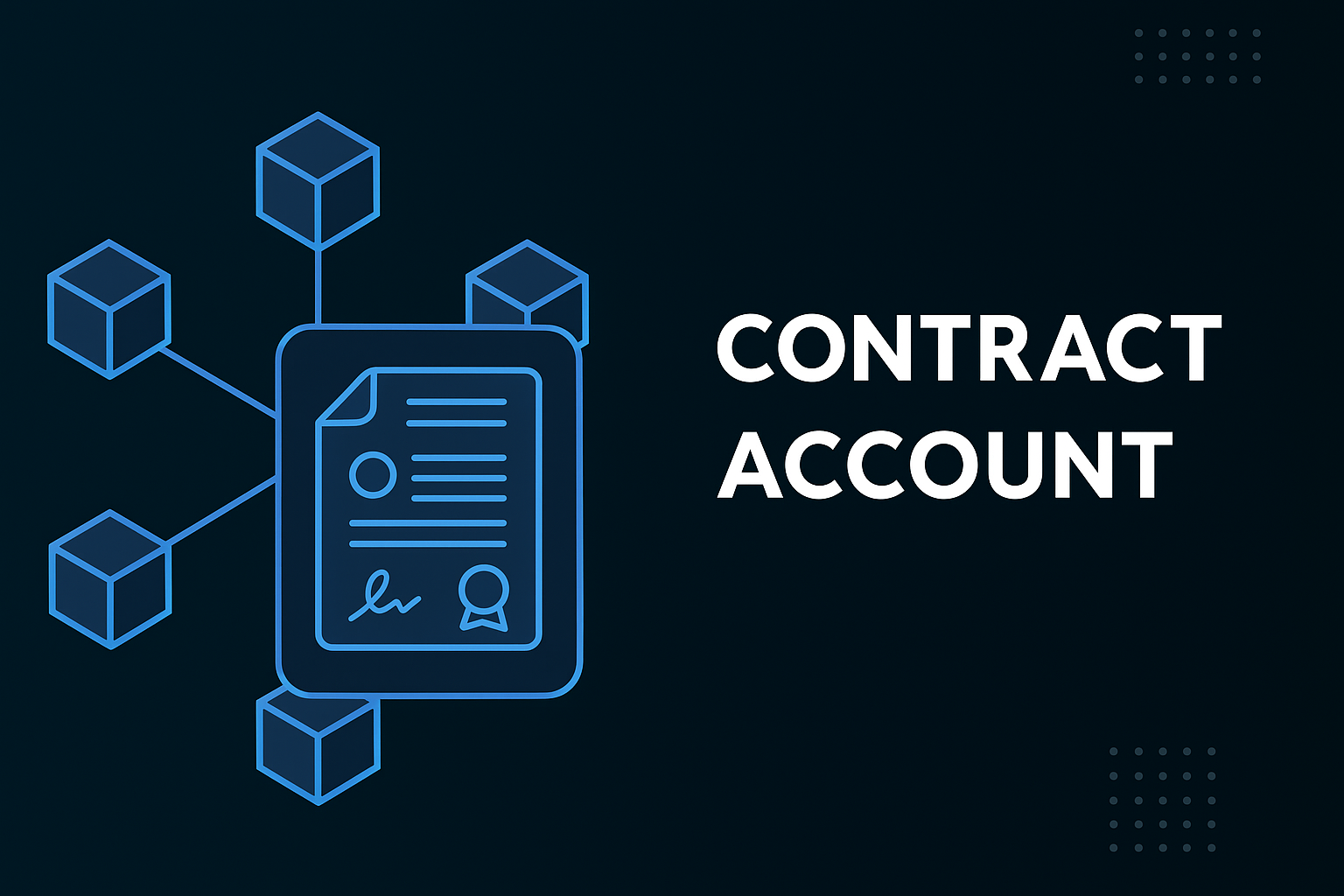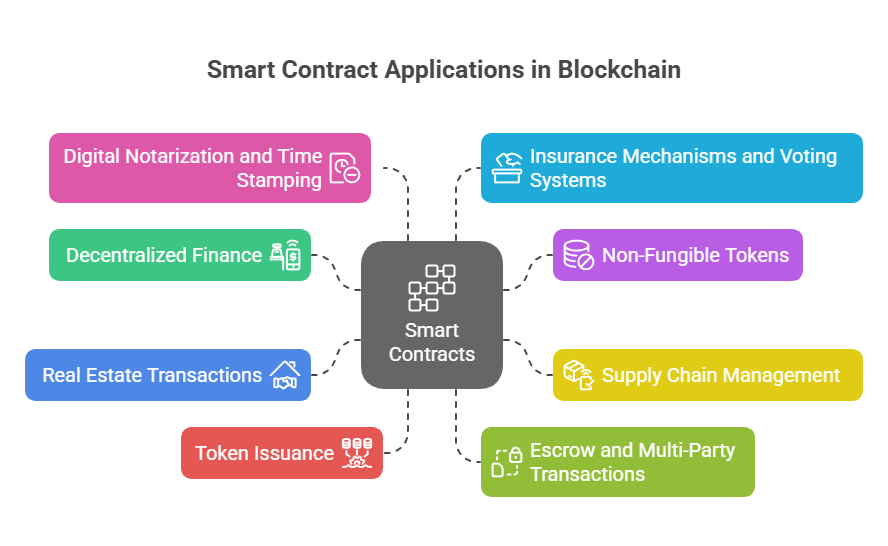Contract Account

Contract Account
A Contract Account, also known as a smart contract account or Smart Contract Account (SCA), is a unique type of account on blockchain platforms, notably in the Ethereum Virtual Machine (EVM) ecosystem. According to the code contained inside the smart contracts, these accounts are made to run automatically and behave independently.
The following is a thorough overview of contract accounts:
Key Characteristics
- Code-Based Control: The code of the smart contract that is implemented on the blockchain governs Contract Accounts, as opposed to Externally Owned Accounts (EOAs), which are controlled by private keys. This code controls the logic and behaviour of the account.
- No Private Key: A private key is not possessed by contract accounts. They just have a programmatic existence and function.
- The inability to start transactions on their own is known as transaction triggered. Rather, Contract Accounts are limited to sending transactions and executing code in response to received messages or transactions from other contracts or EOAs.
- Unique Address: On the blockchain, Contract Accounts, like EOAs, have a unique address. This address is produced when the smart contract is deployed.
- State and Storage: Contract accounts have the ability to store data in their storage, hold and manage cryptocurrencies (tokens and Ethereum), and have internal state variables of their own. This storage is a sizable key-value store that is permanently stored and only accessible by the corresponding Contract Account.
- Limited Functionality (Initiation): One significant difference is their incapacity to independently start transactions, even though they are capable of carrying out intricate reasoning.
You can also read Drizzle Blockchain: Simplify DApp Front-end Development
How Contract Accounts Work
- Deployment: Solidity for Ethereum is one programming language used to write smart contracts.
- Creation of Account: After that, the blockchain receives this smart contract code. With this deployment, a matching Contract Account with a distinct address is created.
- Transaction Interaction: The embedded smart contract code is automatically run based on the transaction data and predetermined conditions whenever a transaction or message is submitted to the Contract Account’s address.
- State Changes and Actions: The contract code has the ability to send transactions or messages to other accounts or contracts, update its storage, and change its state variables when it is executed. It takes “gas” to run this code.
Contract Accounts Versus Externally Owned Accounts (EOAs)
The primary distinction lies in their control and initiation capabilities.
| Aspect | Externally Owned Accounts (EOAs) | Contract Accounts (CAs) |
| Control | Controlled by private keys, typically by a user | Controlled by their smart contract code |
| Private Key | Have a corresponding private key | Do not have a private key |
| Transaction Initiation | Can initiate transactions directly | Can only execute code in response to receiving a transaction/message |
| Programmability | No programmable capabilities; basic transaction and dApp interaction | Highly programmable with complex logic and advanced Web3/DeFi features |
| Creation | Initiated when a private key is linked (no fees for creation) | Activated when the smart contract associated with the address is deployed on-chain (fees required) |
| Nonce | Uses a nonce to track sent transactions | No nonce; interactions based on contract logic [49, 36 (for CA state, refers to contracts created by the account, not for tracking outgoing transactions from itself like an EOA)] |
| Gas Fees | Requires ETH for gas | Can implement gas-saving mechanisms or allow fees to be paid in stablecoins/other tokens |
| Security | User-dependent (private key management) | Security depends on the robustness of the contract code and can support multiple layers (e.g., multisig, 2FA) |
| Account Recovery | Not possible (if private key is lost, account is lost) | Possible (e.g., social recovery) |
You can also read Raft in Blockchain Use Cases, Advantages, And Disadvantages
Internal Structure of Contract Accounts
There are four primary fields in each Contract Account state:
- Nonce: Indicates the quantity of contracts the account has generated.
- The balance of the account is the quantity of Wei, which is the lowest unit of Ether.
- Storage Root: This field directs users to the root node of a Merkle Patricia Trie, which is responsible for encoding the account’s substantial storage contents. This data is stored on the blockchain indefinitely.
- An immutable property called “Code Hash” holds the hash of the account’s smart contract code, which is retrieved by a message call.
Functionality and Use Cases

Contract Accounts Functionality and Use Cases
Contract accounts play a crucial role in carrying out specified directives after meeting predetermined criteria. Decentralised Applications (DApps) and several blockchain-based features rely on them as their foundation:
- Decentralized Finance (DeFi) Platforms: Smart contracts automate loans, DEX trading, lending, and borrowing.
- Non-Fungible Tokens (NFTs) creation, ownership, and transfer are their responsibility.
- Supply Chain Management: Smart contracts have the ability to automate the tracking, verification, and administration of products.
- They can simplify and automate the management and transfer of ownership in real estate transactions.
- Token Issuance: Smart contracts are used to create and manage various types of tokens, such as ERC-20 (fungible) or ERC-721 (non-fungible) tokens.
- Facilitating safe agreements between several parties without the need for middlemen is known as escrow and multi-party transactions.
- Digital Notarization and Time Stamping: Providing immutable records.
- Insurance Mechanisms and Voting Systems: Automating and securing complex processes.
Importance in the Blockchain Ecosystem
Contract Accounts are essential to the blockchain’s development beyond straightforward cryptocurrency transactions. Developers can use them to create dApps that work without a central authority. By automating middleman-based processes, they save costs and improve security and transparency. They are used in blockchains like Ethereum to enable a wide range of decentralised apps and expedite interactions on platforms that aim to decentralise long-standing procedures. They convert the cryptocurrency architecture into a framework for trust.
Account Lifecycle
- Creation: By implementing smart contract code on the Ethereum network, Contract Accounts are established.
- Active Use: They carry out operations in accordance with the logic of the contract, altering internal states and setting off events.
- Modification: Through interactions, the status of the account can be altered. But once released, the contract code itself is usually unchangeable unless there are special clauses for upgrades, which frequently need delivering a new version.
- Deactivation: Unlike EOAs, Contract Accounts are not “deactivated” in the same sense. Until their code and state are specifically deleted, for instance, by a “self-destruct” feature incorporated into the contract or if they become outdated owing to newer versions, they stay on the blockchain.
You can also read What Is ewasm Ethereum WebAssembly In Blockchain
